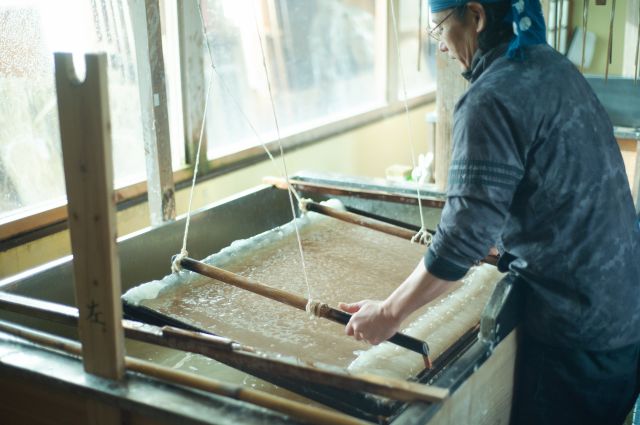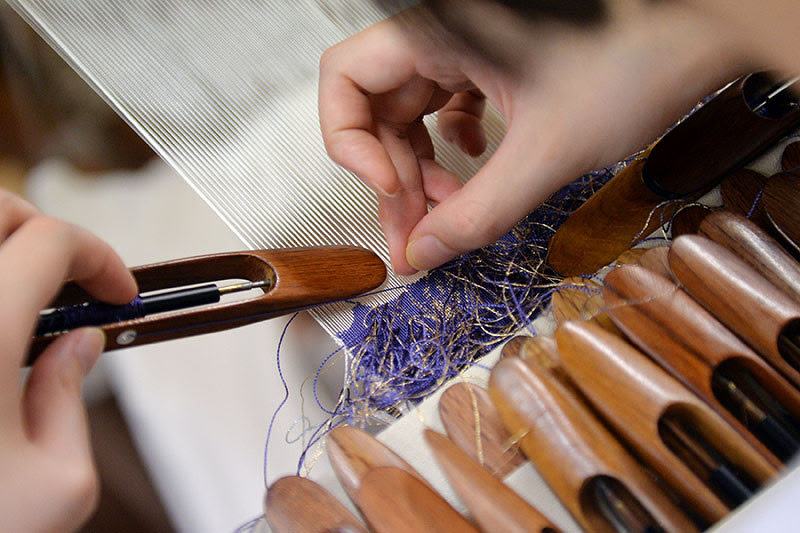
tapestry frames
Ishikawa Tsubure K.K. is a textile manufacturer located in Nishijin, Kyoto that is dedicated to traditional “Tsumegaki Hon Tsuzure” nail weaving techniques. It’s an established store with a long history that has a lineup of Tsumegaki Hon Tsuzure obi sashes, kakejiku scrolls, fukusa pouches and more products made with tsuzure weaving techniques. Recently, we have been framing our tapestries and then selling them. We also accept full orders for tapestries, festival banners, and other items. Nishijin Tsumegaki Hon Tsuzure nail weaving involves filing a fingernail and using the resulting zigzag fingernail as a tool to weave weft threads together. It is an extremely intricate and effort-intensive textile and a true “artisan technique.” It is formally called “Nishijin Tsumegaki Hon Tsuzure Ori” and uses “Tsuzure looms” operated by human hands and feet, rather than machines to weave complex patterns using a traditional “Tsumegaki” technique.
Photos
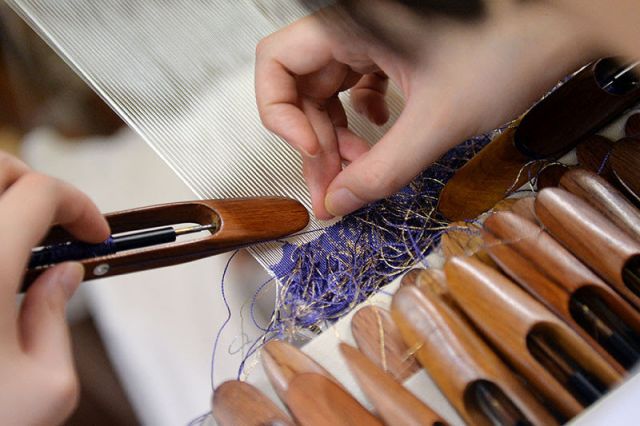
A tsuzure weaving being woven
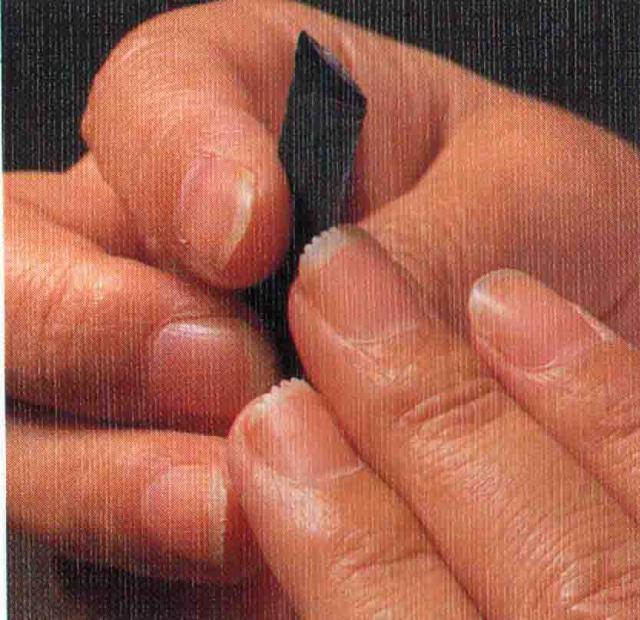
A nail being filed
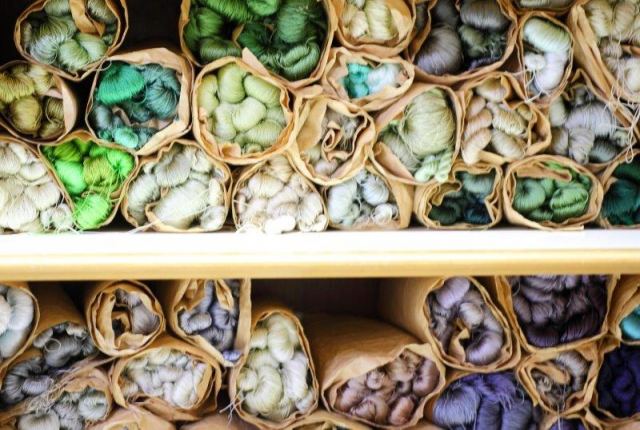
Shelving with color schemes upon it
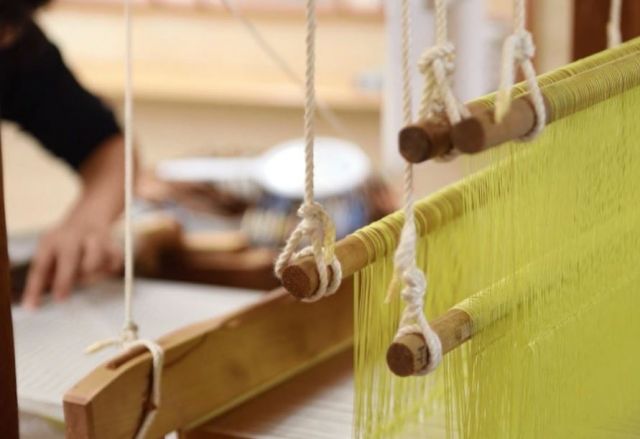
The textile workshop Shows the weaving process
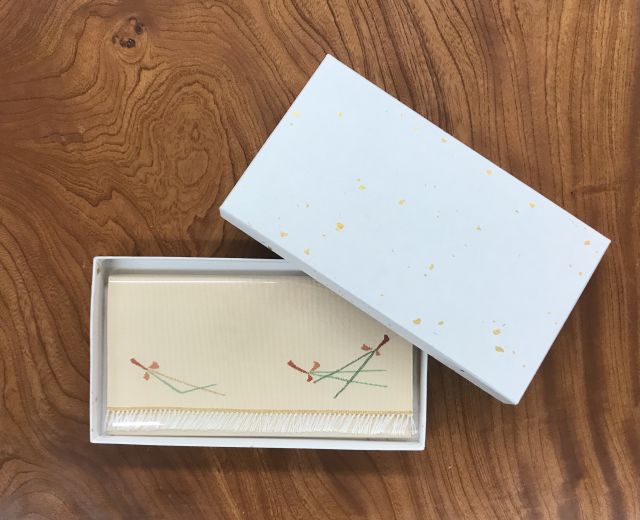
This kaishi case can also be used as a wallet. Adorned with a pine needle design.
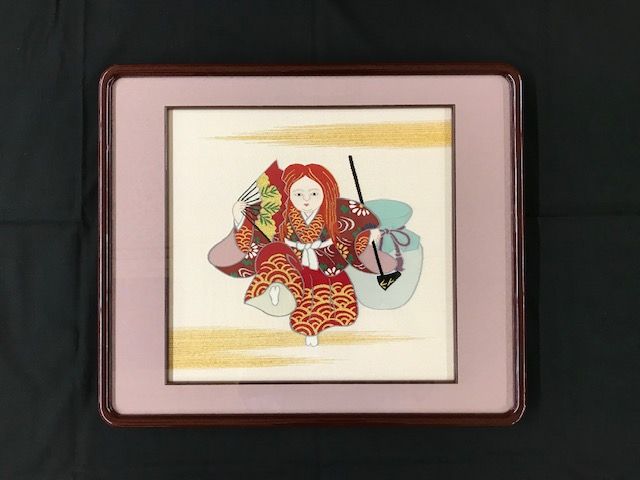
“Shojo” is an auspicious pattern from Kyogen theater.
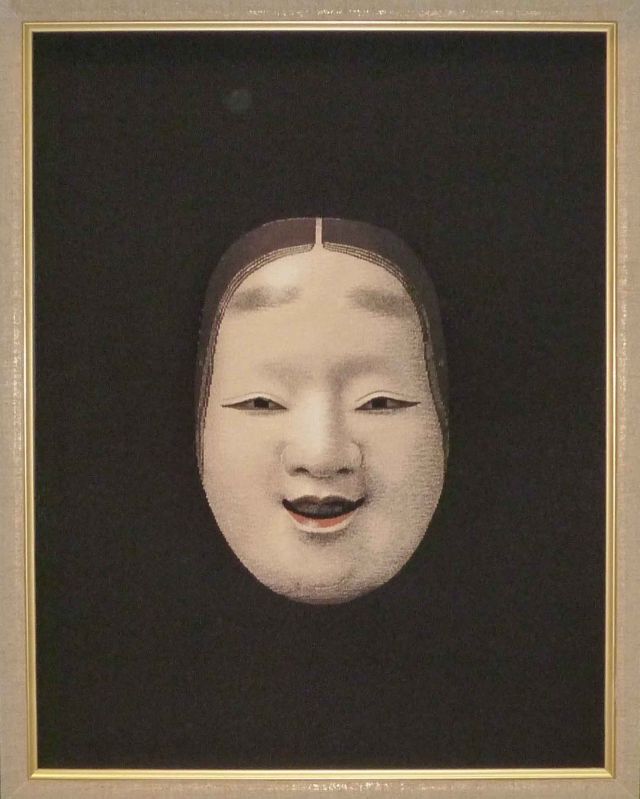
This is woven with the three-dimensionality of a “Magojiro Noh Mask.”
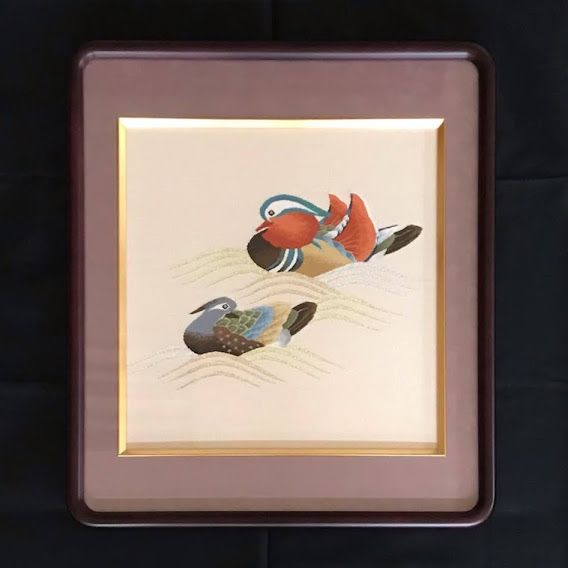
“Mandarin duck” designs are auspicious patterns in Japan.
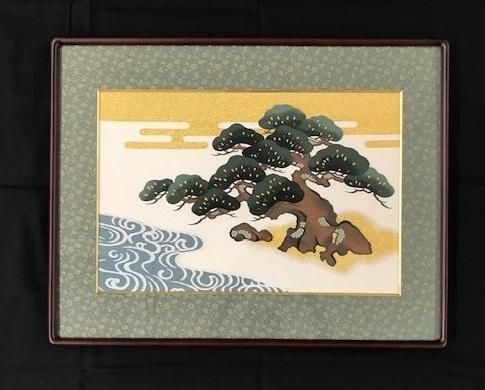
This is the auspicious pattern of a pine tree with flowing water rendered in the style of the “Kano School.”
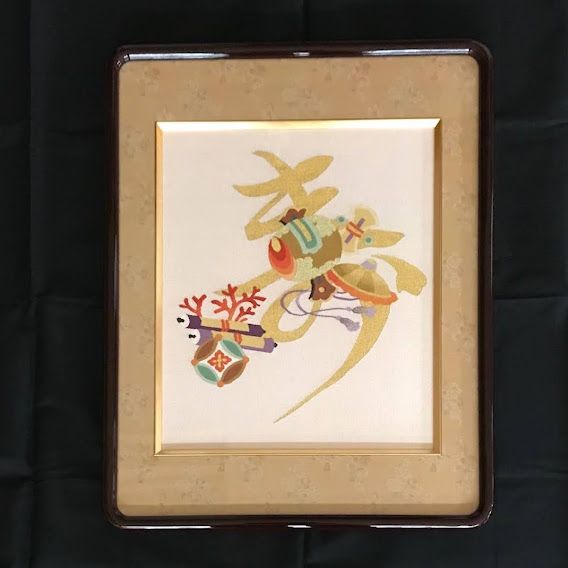
“Kotobuki” chimera with auspicious takara-zukushi (treasure collection) patterns, including straw hats, coral, cloisonne, balance weights and more.
Information
- Minimum Number of Passengers
- 1 participant
- Maximum Capacity
- 30 participants
- Participation Restrictions
- More than 30 steps must be climbed. Equipped with handrails.
- Meeting and Exchange Areas
-
Store entrance
83 Hiranomiyamotocho, Kita-ku, Kyoto, Kyoto - Open Period
- Closed on certain days
- Closed Period
- Excluded dates: Saturdays, Sundays, holidays, and the Obon and New Year’s holidays (January 1 to 4, August 9 to 18 and December 27 to 31)
- Meeting Times and Business Hours
- 10:00 a.m. to 4:00 p.m. (Closed 12:00 p.m. to 1:00 p.m. and 3:00 p.m. to 3:30 p.m.)
- Tour Schedule
- Meet at the store > Hear an explanation of textiles (around 30 minutes) > Shopping (around 30 minutes)
- Required Time
- 60 minutes
- Provision of Meals
- Meals are not provided
- Open to meal requests
- Meals not available
- Universal accessibility
- No (there are stairs.)
- Parking
- Parking: Available for up to 2 standard-sized vehicles
- Notes
- Please come with the intention of making a purchase.
Map
Nearby Spots
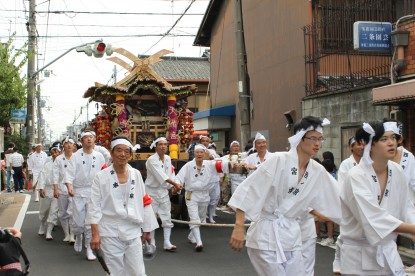
Zuiki Matsuri
300 m
The Kyoto Museum for World Peace, Ritsumeikan University
560 m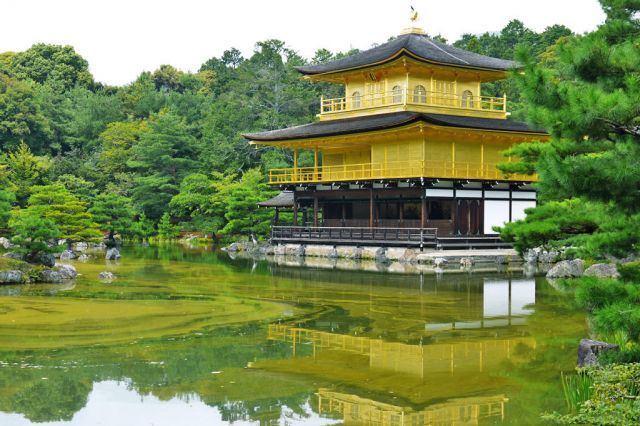
Kinkaku-ji Temple (The Golden Pavilion)
1.02 km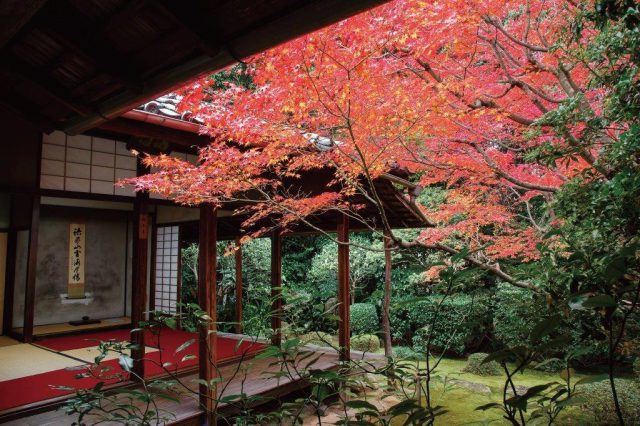
Kenshu-in Temple
1.06 kmCheck also...
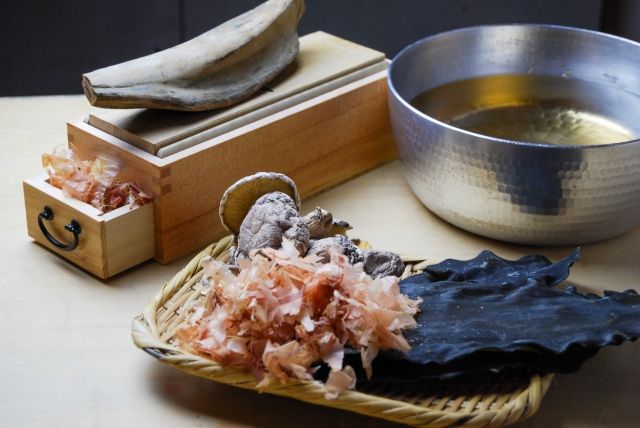
Experience Japan's ”dashi” and ”umami” food culture
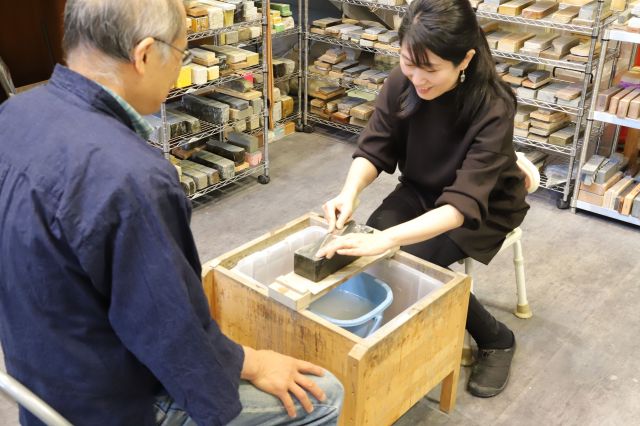
Japanese Knife sharpening workshop/Making your own whetstones
![[Forest Kyoto limited set plan] For both children and adults! Casual glasses that blend into your daily life](/kansaiguide/data/directory/22000/21708/20240329_235948_99b6173f_w640.jpg)
[Forest Kyoto limited set plan] For both children and adults! Casual glasses that blend into your daily life
